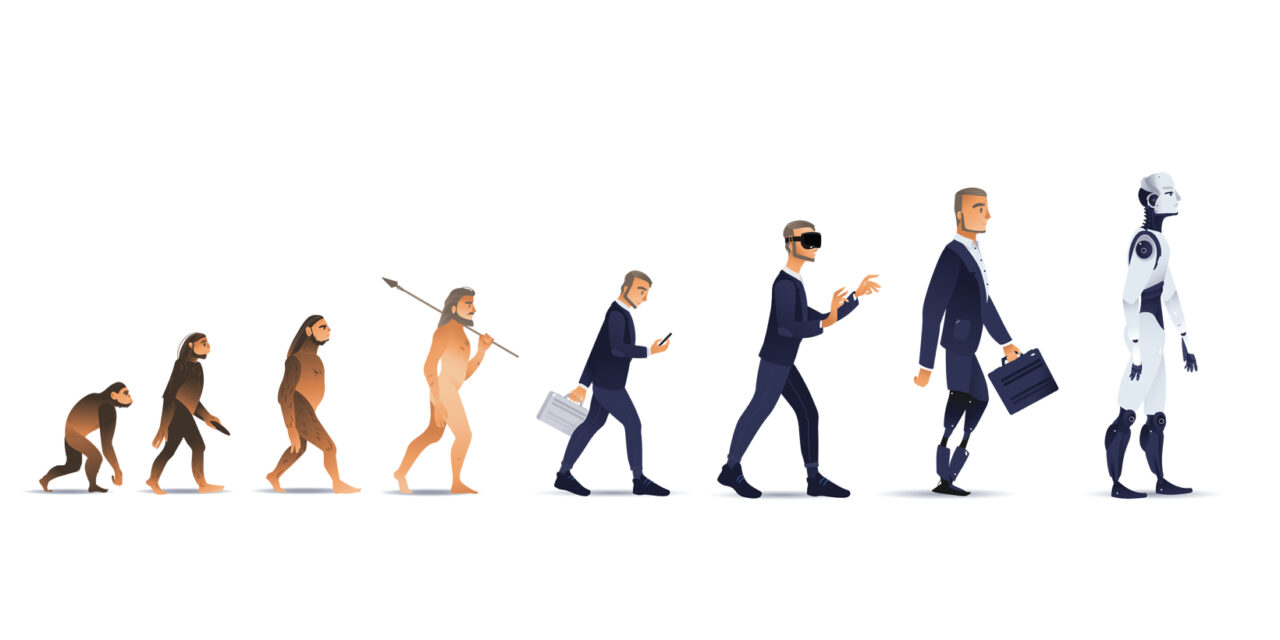
Evolution: Humans 2.0
Today, humans may be on the precipice of a different sort of evolution—one driven not by natural selection, but by the integration of human biology and machines … what some futurists call “the singularity.”
To view the full article please register below:
Evolution: Humans 2.0
Around 5,000-10,000 years ago, humans on the European landmass underwent an evolutionary change that allow them to tolerate the lactose in milk, offering a massive advantage in being able to thrive in a less sunny continent, as well as providing them with an alternative food source to crops.
Evolutionary changes occur by natural selection and often develop over extended periods of time. Today, humans may be on the precipice of a different sort of evolution—one driven not by natural selection, but by the integration of human biology and machines … what some futurists call “the singularity.”
Smarter, Stronger, Faster
Like the “Six Million Dollar Man,” technology will allow humans to become smarter, stronger, faster, and live much longer and healthier lives.
The augmentation of humans is expected to come in two forms: physical and mental.
Consider the findings of a 2019 study by the U.S. Army, “Cyborg Solider 2050: Human/Machine Fusion and the Implications for the Future of the DOD.” As they surveyed these emerging human augmentation technologies, they found a number of military applications, including:1
- Ocular enhancements to imaging, sight and situational awareness
- Restoration and programmed muscular control through optogenetic bodysuit sensor web
- Auditory enhancement for communication and protection
- Direct neural enhancement of the human brain for two-way data transfer—the most revolutionary potential development since it will allow read/write capabilities between humans and machines and between humans through brain-to-brain interactions
The potential for radical change goes well beyond the military sphere. Civilian lives may be changed in numerous and profound ways. For example:
- Human prosthetics connected to the brain could allow the brain to register their movement and provide abilities way beyond our natural human limits.
- Cognitive enhancers may increase mental abilities through drugs or by fusing brains, machines and artificial intelligence. Imagine a brain connected directly to the internet and cloud to find and store information and memories.
- Nanobots may be used to extract memories and, when combined with an individual’s DNA, infinite life becomes possible. (That should upend retirement planning strategies!)
- The aging process could be eliminated or meaningfully delayed due to the replacement of organs through lab-grown replacements or the transplant of a human brain into a bionic body.
While the idea of transcending our physical bodies and their limitations can sound farfetched, bear in mind that technological progress occurs at an exponential rate. Twenty years ago, people would have viewed some of today’s technological wonders (e.g., gene editing, 3D printing, artificial heart and pancreas, augmented/virtual reality, and quantum computing) with equal skepticism.
The future might be closer than you think, especially when you consider the evolution we’ve already experienced right at our fingertips.
Sources
Please reference disclosures: https://blog.americanportfolios.com/disclosures/












